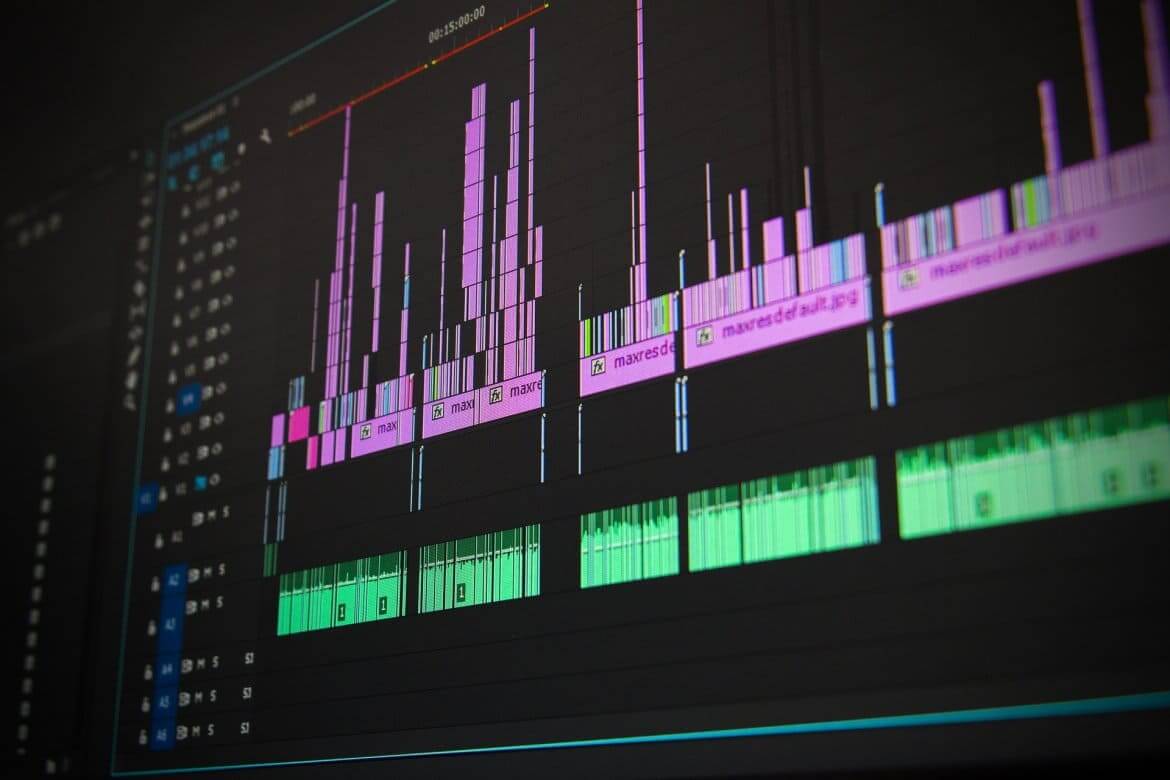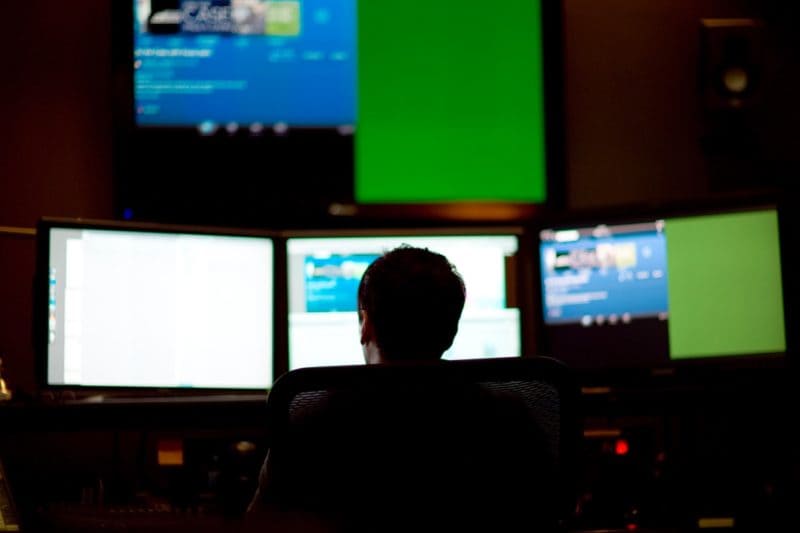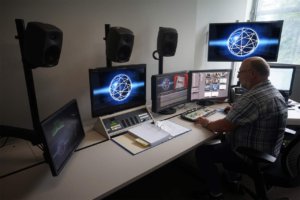Video Editing Services Costs Explained

Not one digital marketing strategy you employ will ever be as effective as using videos to promote your business. Videos have risen to be one of the most effective forms of content marketing. You should be using video if you expect your business to grow.
But who can you trust to get the job done right? How much does it cost? And what considerations should you take to heart when looking for video editing services? The quality of the video editing will determine the effectiveness and validity of your video project.
If you are considering using video, either as a marketing tool for your business or simply for personal use–like capturing your wedding or other life events as keepsakes– we are here to help you.
What is video editing?

Video editing takes place in the post-production phase of a video project. It’s the detail work that enhances raw video footage. Video editing teases out the highlights from long recordings of an event or commercial work, revealing a perfect story that engages and informs viewers.
Video editors rearrange shots and scenes,, clean up and enhance their quality, and present your video to you in a form you can proudly share with others. Your editor should be capable of everything from adding basic video transitions to using complicated computer-generated imagery (CGI), audio and creative techniques that make the ene product amazing.
Any type of video footage can be edited to become something wonderful and be remembered. You can, for example, edit footage from your wedding, vacation, family meetings, videos of your kids growing up, celebrations, graduation, and so much more. If you are considering professional videos like TV commercials, web videos, vlogs, documentaries, music videos, short or full-length films, and social media clips, and looking for professional video editing services that will personal life shine or your company’s services memorable, you’re in the right place.
Stages Of Video Post-Production Services:

Post-production processes may vary depending on the requirements of your project, but typically video editing goes through five main processes, which are:
1. Reviewing the Footage (Dailies)
In most cases, there is more footage shot than will be used in the final product. On large projects, editor appreciate getting daily footage rather than a week’s worth of footage. As it is, they will spend many hours in front of the screen before they even begin the edit. It’s best if you can provide “dailies.” This way, editors can take in smaller amounts of footage, making it easier to form a complete, edited picture in the end.. Dailies also highlight missing shots that the editor can alert you to. Perhaps you’ve missed something necessary to relay the story well. Dailies will avoid that problem..
2. First Assembly
The first assembly is when the video editor, using the storyboard, starts making selections. Usable footage is trimmed and marked, while the less advantageous shots are cut. The editor takes all the usable footage and arranges it in a sequence of potential shots for the final edit. This stage of the process is only to be shared with the director and producer.
3. The Rough Cut
The rough cut is the first true compilation of the bits and pieces of footage that will become part of the final product.. At this phase, there will likely still be some review and reorganization, but this is also where the creative juices begin to flow. Editors use their computer skills to help tell the best story, crafting the message, and ultimately, working to achieve the director’s vision. This is when the video editor works most closely with the producer and the client to shape the overall edit. They all agree on what changes and enhancements before they move on to the final cut. During the rough cut phase, editors play with timing, transitions and overall focus, working to create an emotional connection with the audience.
4. The Final Cut
The final cut is not the ready-to-release version of the video, but it is very close, when the tweaking of timings and scene arrangement are locked into what feels like a complete product. At this stage, it will be reviewed with the director and producer. If there’s a scene that doesn’t suit or contribute to the overall story of the video, it will be eliminated.
While some scenes are removed, there is also a lot of content added, such as visual effects and graphics. This is also the point when music or voiceovers are added. The final cut is processed with an audio editing suite to ensure proper sound levels. The goal is to mix these components expertly, creating an audio track that supports and carries the final video.
5. Color Grading
During this final stage, a color editor goes through the video frame by frame to adjust the color for both mood and consistency. Color grading grants consistency between the shots and can establish the mood of the scene or film. The filmmaker or client may prefer a dark or dreamy mood, for example, so the color editor would consider this when going through the footage.
How much does video editing cost?

There’s no one-size-fits-all cost to video editing.. There are a lot of different factors that determine the final cost of a professional video editing service, such as:
The total duration and quality of raw footage
The final duration of the finished edit
If there is motion graphic work involved
If there are text overlays
Color correction and grading process
Image stabilization
Video type
The style of the final video
The overall complexity of the work in general
Some video post-production services go with a fixed rate that you agree on upfront so you know how much you are going to pay for your video. Others prefer hourly rates. You can expect video editing to cost anywhere between $40 and $175 per hour, but how do you estimate the number of hours for your video project? In most cases, video editing costs are estimated by the number of cuts per finished minute or the estimated implementation time that the editor can achieve on average. As an example, based on the ratio of source to editing of 10:1, one hour of source footage would require ten hours of editing. This is how they budget out an hourly estimate of time for your project. To make things clearer we will go into the factors that determine the number of hours:
Length of Reviewed Footage
The amount of footage that is reviewed and sorted for editing can play a major role in the total cost of video editing for your project. A professional editor will spend a lot of time going through a lot of footage in order to find the bits and pieces that will make your best video. This means a longer time if you want to have your footage edited into a precisely finished wedding or real estate video.
Type of Footage
If you’re looking to have personal footage edited, it will probably take more time than it would for professionally captured footage. This is due to the fact that poor-quality or random footage will require extensively longer review time in order to find what is needed. Editing professionally shot footage will have significantly faster edit time as the editor will find more useful footage in a shorter time period.
Number of Cuts Per Finished Minute
A finished video that includes 20 cuts (transition or moving from one scene to another) per finished minute is naturally going to take longer to edit and produce than a video that includes 5 cuts per finished minute. The editor may evaluate the time based on the number of cuts per finished minute and know that he needs to include additional time for the transitions, color correction, and any task associated with each cut added to the finished minute of video.
Motion Graphics
Finally, special effects and graphics will greatly add to the amount of time it takes and the level of technical experience needed to edit your video. If you’re having a video created that includes motion graphics, expect the editing to cost more to finalize. Raw footage that is technically prepared to include motion graphics can be complex and difficult to understand by the client, but your videography editing company will spend additional time making it all come together.
AVERAGE EDITING RATES

To sum it up, Video editing ratios for a 2-to-5-minute marketing video production range from 5:1 to 25:1. A video with long takes will edit faster than a video with many edits or cuts. Likewise, more complicated videos with so many different angles and takes will require more editing time. A music video production with rapid edits and complicated montage sequences might need a 25:1 to 35:1 source to edit ratio.
Another way to specify professional editing costs is to calculate how many cuts per minute your finished video will have and multiply it by the finished video length. For example, a 3-minute video with 10 cuts per finished minute would result in 30 cuts. Alternatively, a 3-minute video with 20 cuts per finished minute would result in a higher cost as there would be 60 cuts or transitions for the editor to work through. You can bring costs down by having fewer cuts.
Final Thoughts
As we have mentioned, video editing costs vary enormously, but now you have a vivid idea of how things work and how much work is involved in the process. Creative Blend realizes how important the end result is to you. Like you, we want to make your experience positive and fulfilling, putting out a successful video like no other. Contact us and learn more about our professional video editing services that includes corporate video editing, commercial video editing, film editing services and marriage and real estate video editing services. Discover the endless possibilities we offer and enjoy marvelous outcomes!

